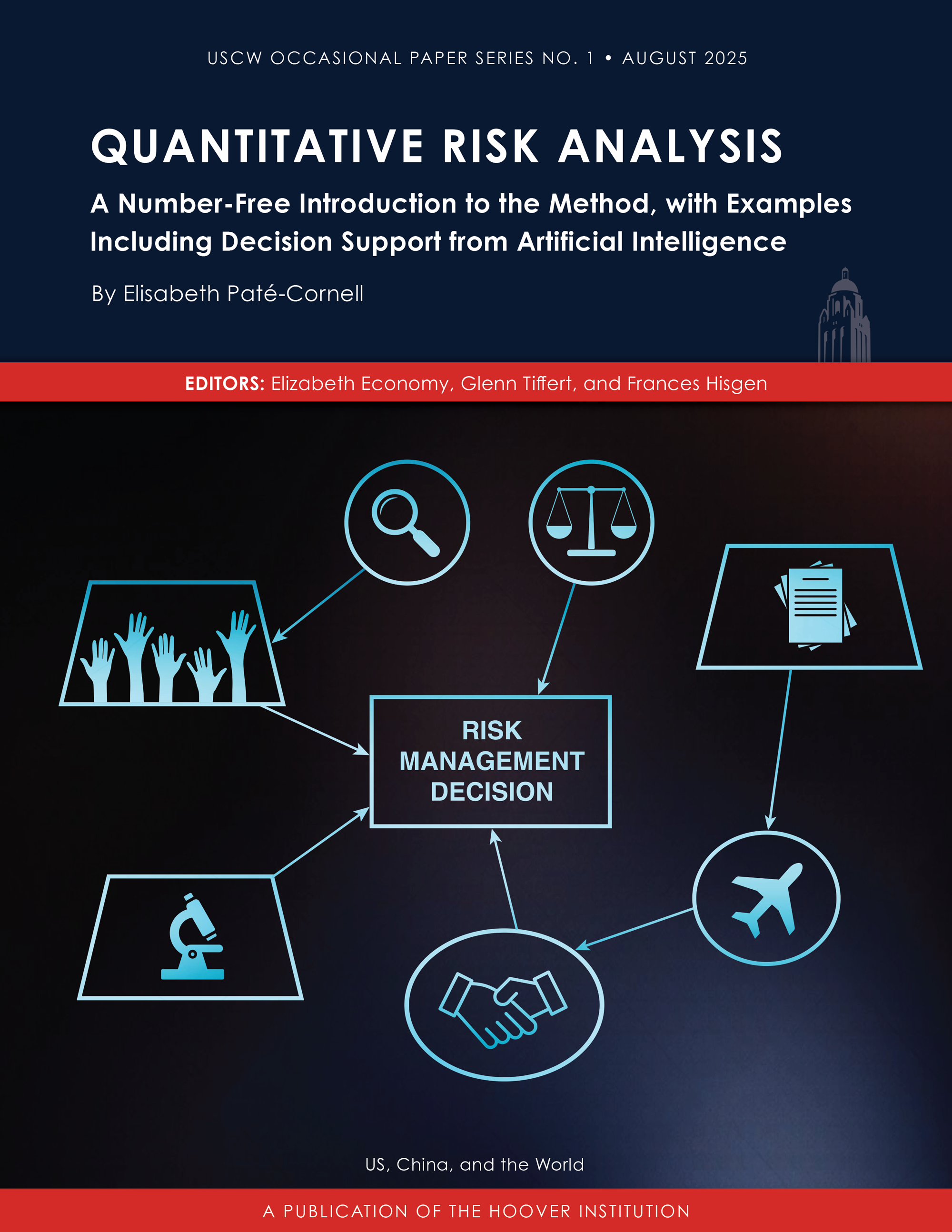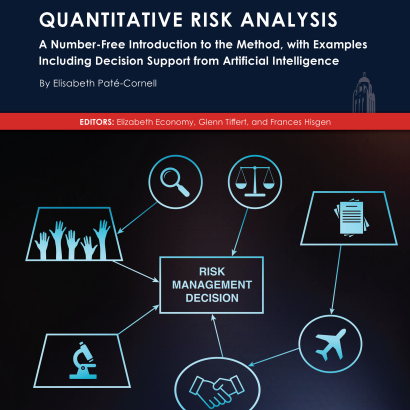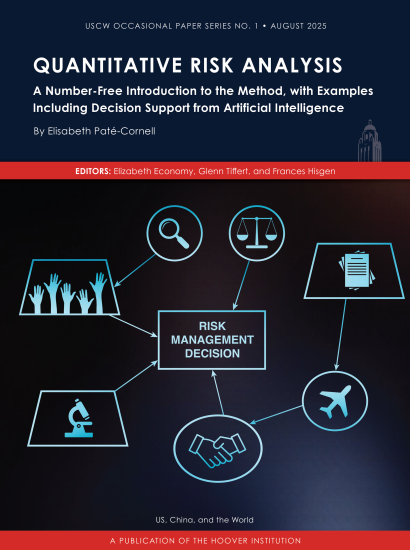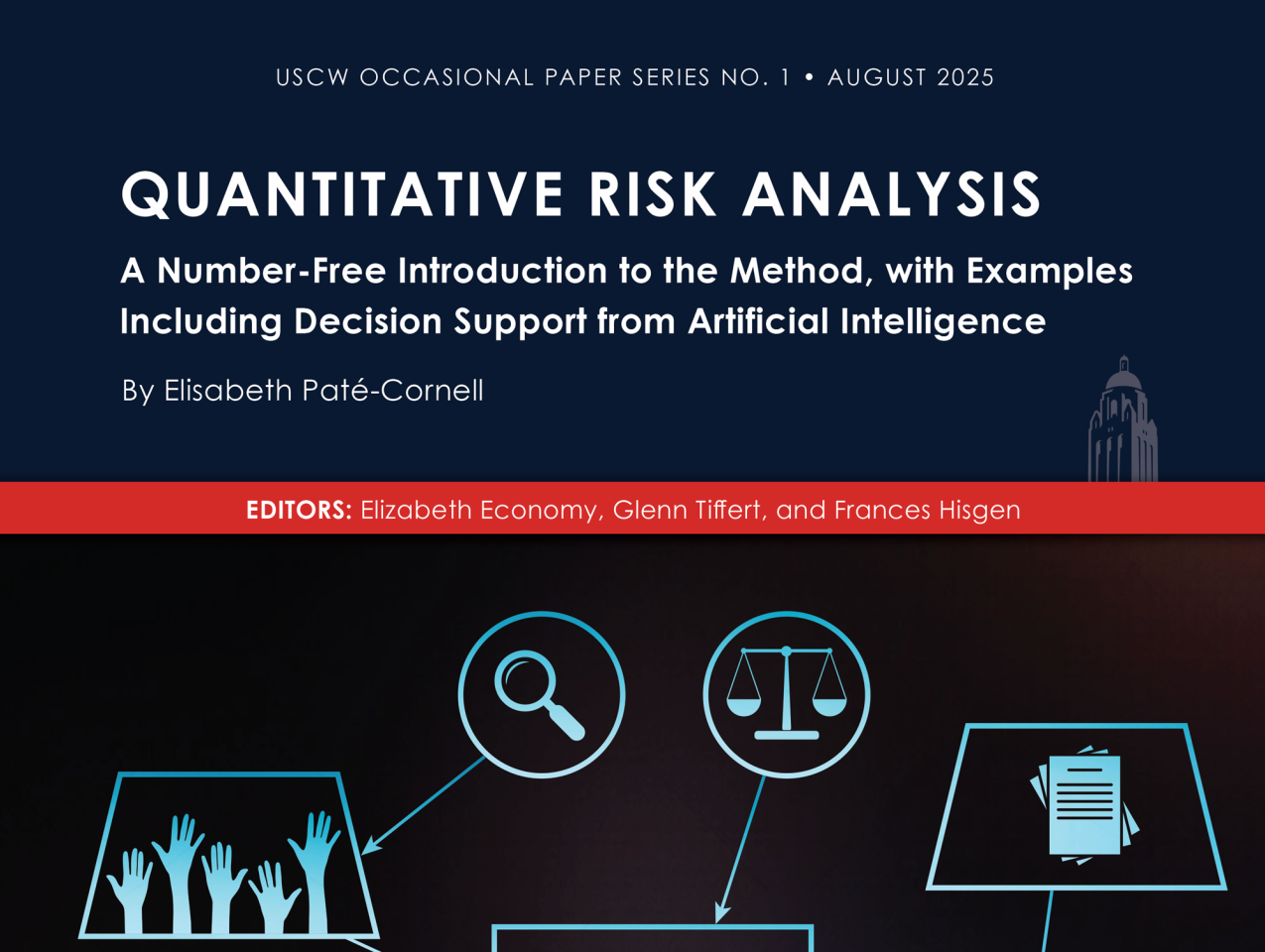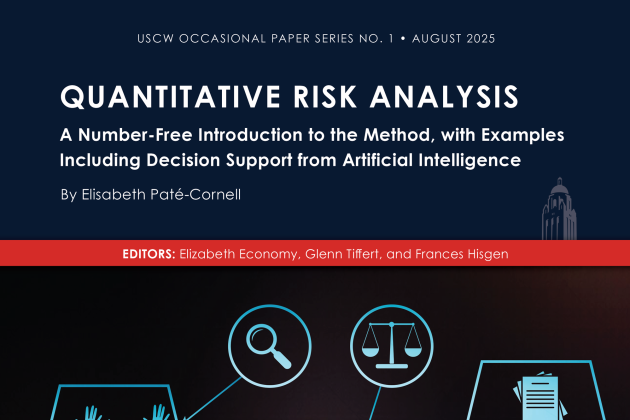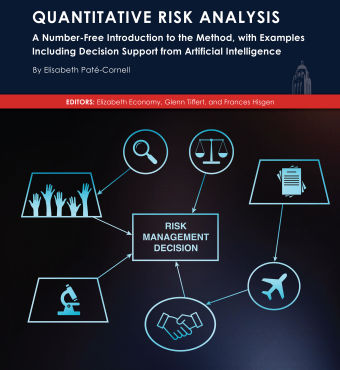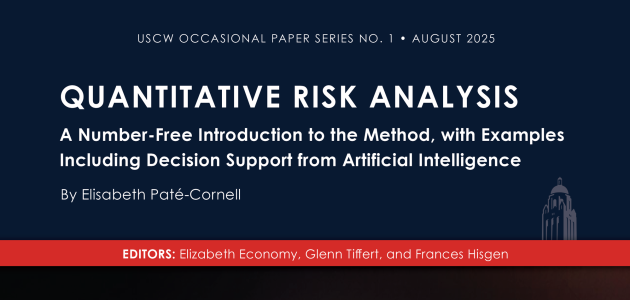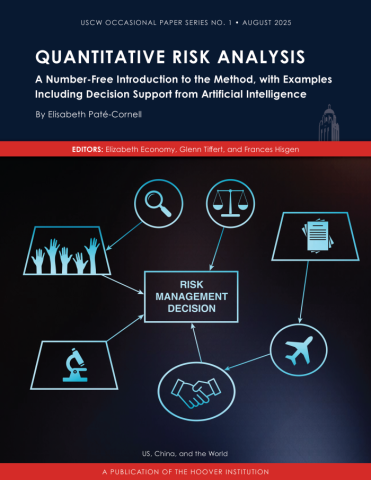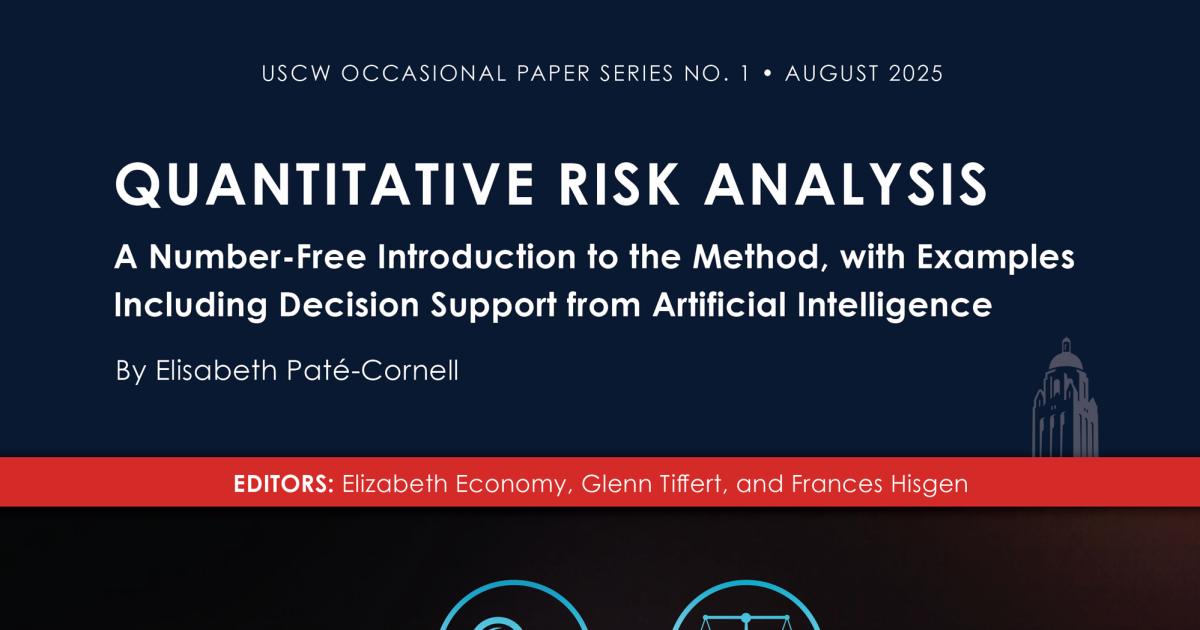- Security & Defense
- Cyber Security
- China
- Confronting and Competing with China
Sound policy decision making—especially in the US-China relationship—involves understanding risk: uncertainties and their consequences. Quantitative methods of risk analysis determine failure probabilities, forming input for rational risk management. Quantitative probabilistic analysis requires factual analysis independent of personal biases, based on known scenarios and outcomes. This report provides a conceptual introduction to the topic for policy professionals using examples from surgical anesthesia, spacecraft heat shields, and AI-supported cyberattack warnings.
Key Takeaways
- Cases of probabilistic risk analysis offer lessons that can enhance conceptual understanding of how to make risk-informed decisions.
- The ultimate objective of risk analysis is to support rational, proactive risk management, accounting for all available, relevant information, including precursors and near misses, as well as an individual's or institution's risk tolerance.
- No scenario can be entirely without risk. Managing risk is therefore more important and realistic than avoiding risk.
Quantitative Risk Analysis: A Number-Free Introduction to the Method, with Examples Including Decision Supp... by Hoover Institution







